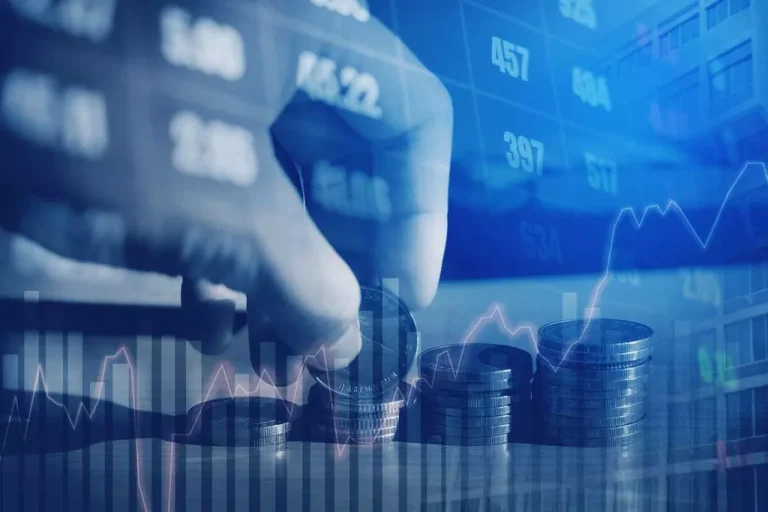Content
It means the investment’s value isn’t very grounded, which makes its price incredibly sensitive to even slight changes in investors’ expectations or perceptions. There are investors who are interested in crypto not to use it as a currency, but to use it as a hedge against inflation, or as an investment vehicle. But without anything intrinsically valuable backing up the currency, crypto’s market value is based entirely on speculation, which is essentially educated guesswork. Bitcoin has only been around for a short time—it is still in the price discovery phase. This means that prices will https://www.xcritical.com/ continue to change as investors, users, and governments work through the initial growing pains and concerns until prices stabilize—if a stable point can be reached.
- Speaking of finding opportunities, YouHodler provides you with the tools to capitalize on volatility.
- Margin Accounts.Margin investing increases your level of risk and has the potential to magnify your losses, including loss of more than your initial investment.
- Of those, option markets offer the unique potential to extract volatility information that would otherwise be unobservable.
- The Terra-LUNA depegging in 2022 led to the unprecedented collapse of the Terra ecosystem, causing significant repercussions in the crypto market.
- It isn’t uncommon for Bitcoin to have a $2,500 difference between its high and low price for one day—the most volatile stocks see price ranges measured in tens of dollars.
Volatility in Traditional Markets
This interactive tool allows the reader to investigate the phenomenon of day-to-day volatility for different cryptocurrencies, traditional assets, and time periods. During the period 2018–2022, Bitcoin’s average daily change (measured as the absolute value of the percentage change from the previous day) was 2.87%, versus the Euro crypto volatility (0.34%), pound (0.43%), and yen (0.35%). Other major cryptocurrencies, such as Ethereum (3.76%), Ripple (4.04%), and Dogecoin (4.55%), exceed Bitcoin’s already-high fluctuations. Cryptocurrency markets are inherently volatile, influenced by various factors including market sentiment, trading volume, liquidity changes, and macroeconomic events. Institutional adoption, technological advancements, regulatory frameworks, and project-specific developments all play critical roles in shaping the stability and performance of cryptocurrencies.
Navigating the Future: A Deep Dive into Decentralised Physical Infrastructure Networks (DePin)
As a result, taxes factor into Bitcoin’s Cryptocurrency wallet market price—but it doesn’t necessarily contribute to its volatility unless the tax regulations change often and cause investor concerns. Crypto enthusiasts have voiced concerns that greater government spending will fuel inflation in the future, and cryptocurrencies can help protect against this risk. Securities and Exchange Commission that can greatly affect the volatility of cryptocurrencies — especially if there are fears that the ability to mine or own Bitcoin may be curtailed.

Why South Korea’s Housing Market Is So Vulnerable

Furthermore, indices that are turned into tradable assets and derivatives thereon improve market accessibility. S&P 500 and Euro Stoxx 50, for instance, are two large indices that track North American or European stocks respectively. These price or return indices are complimented by risk benchmarks, most famously CBOE’s Volatility Index (VIX), colloquially dubbed the ‘fear index’, which is designed to capture expected volatility.
The 6 in the appendix also estimates a similar model specification when the three regressors are all decomposed into the signed components. However, each cryptocurrency is usually backed by a different project idea or use case, which makes it interesting to disentangle the aggregated effect provided by the pooled panel analysis. This comparison has been further analyzed within the literature at the intersection of statistics and social sciences (Allison and Bollen, 1997; Teachman et al., 2001; Ejrnæs and Holm, 2006; Allison, 2009).. Wang et al. (2023) explore the FoMo idea specifically on BTC finding positive asymmetric volatility behavior in the Bitcoin market. Huang et al. (2022) detail the contribution of jumps in cryptocurrency price series to the inverse leverage effect.
Psychology-driven behaviors can cause retail investors to enter the market without clearly understanding the asset class, viewing it as a new opportunity with high potential (Pursiainen and Toczynski, 2022). King and Koutmos (2021) elaborates on the effect of herding behavior on the trading activity for cryptocurrencies. Psychology-driven behaviors can cause retail investors to enter the market without clearly understanding the asset class, viewing it as a new opportunity with high potential (Pursiainen and Toczynski 2022). Cryptocurrencies have continuously gained popularity since Bitcoin (BTC), the first and most well-known cryptocurrency, was created in 2009, right after the 2008 financial crisis, as a response to traditional financial institutions’ perceived lack of trust. One reason behind this sharp increase in interest is their potential for enhancing financial freedom and removing intermediaries from financial transactions. Individuals can make peer-to-peer transactions with cryptocurrencies without a central authority or intermediaries.
Table 1 provides exemplary option contract specifications from Deribit, CME, and CBOE. Exchange mechanics are also roughly identical; in particular, every exchange that offers derivatives also provides a clearing service that requires an extensive infrastructure on top of the matching engine. There are likely multiple causes for the unusually high volatility of cryptocurrencies. While more widespread adoption may be part of the solution, other likely causes are structural and follow directly from the way cryptocurrencies are designed. Large banks and other financial firms hold huge reserves of traditional currencies, and stocks have market makers, both serving to smooth out short-term volatility and make exchange markets more liquid.
At first, the drop in realized volatility almost immediately preceding or during a new bull run seems counterintuitive. Ironically, this should be the time when investors are most excited because it may be signaling the beginning of a rise in price. However, realized volatility tells us this is not the actual sentiment because price swings become somewhat muted. Even more telling is the Sortino ratio, which only considers downside risk (standard deviation) in its calculation, providing investors with a lens of how much downside risk they are accepting for the return. Here, bitcoin’s Sortino ratio of 1.86 is nearly double its Sharpe ratio, revealing much of the volatility was to the upside.
Daily percent change values are calculated from the percent change from the previous trading day’s adjusted close price. Our comparison of daily changes across different types of currencies and assets presents a challenge because different assets trade according to different schedules. Stocks trade on exchanges with daily opening and closing times and close on weekends and certain holidays. Traditional foreign exchange markets stay open around the clock, Monday through Friday, but close on weekends, and this is further complicated by time zones and different holidays globally.
Indeed, traders can often find arbitrages between centralized and decentralized exchanges. Hence, the cryptocurrency market is slower than the equity one at transferring information into the quoted prices due to these two concurrent layers of activity. The econometrics literature has shown how high-frequency price data can improve the estimation and predictability of the volatility for a cross-section of equities (Patton and Sheppard, 2015; Bollerslev, Li and Zhao, 2020).
This is an important exercise as several modelling choices depend on the specifics of the market. This includes, in particular, market liquidity that poses a bigger concern for cryptocurrency derivatives than for most traditional derivative markets. Options—like other financial derivatives—are tied to their underlying by an arbitrage relationship, which is based on the replication of the options’s cash-flow. The dynamic nature of an option replication is directly linked to the underlying’s volatility during the lifetime of the contract. We are interested in extracting volatility information from this unique type of market.
After analyzing the cryptocurrency ecosystem at the macro level, we analyze the data in our universe at the micro level by individually estimating each model’s specifications for each entity. Since the panel estimation provides an average effect of the whole ecosystem, we are also interested in evaluating the tested effects at the individual level to understand which results in the previous Sections are commonly shared among many universe components. Similar to the previous section, each figure presents a group of subplots, each referring to a different estimation horizon and following the same order. We present the signed volatility component results, the daily leverage effect, and the signed jump components. For each bar plot, the cryptocurrencies are ranked by the magnitude of the respective coefficient, and the bars are either blue if the estimation is statistically significant at least at 5%, or red if they are not. For some cryptocurrencies, the individual estimation of the HAR-like model does not converge; hence, these cryptocurrencies are excluded from the graphic representation.
If you are unable to do so, Public Investing may sell some or all of your securities, without prior approval or notice. For more information please see Public Investing’s Margin Disclosure Statement, Margin Agreement, and Fee Schedule. Investments in Bonds are subject to various risks including risks related to interest rates, credit quality, market valuations, liquidity, prepayments, early redemption, corporate events, tax ramifications and other factors. The value of Bonds fluctuate and any investments sold prior to maturity may result in gain or loss of principal. In general, when interest rates go up, Bond prices typically drop, and vice versa.

Comentários